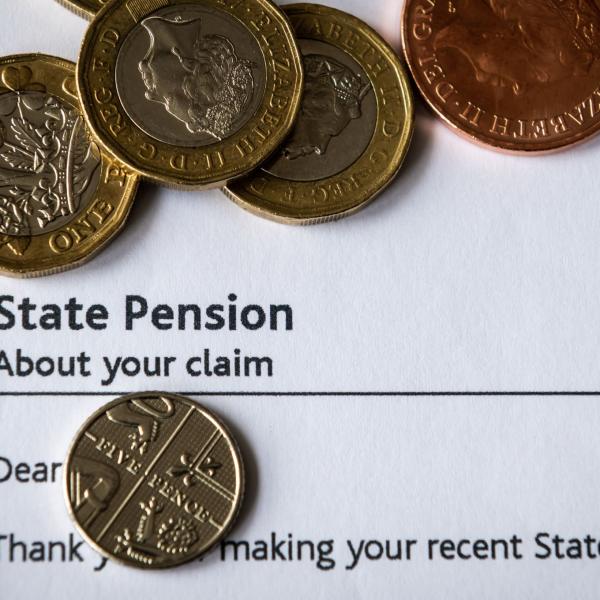Last year the government set out proposals to expand the number of grammar schools across England representing a significant shift in the education system. Such a change means costs and benefits, and there would be winners and losers writes Luke Sibieta, Programme Director of the Education and Skills sector at the Institute for Fiscal Studies.
It does appear that those who attend grammar schools do, on average, somewhat better than similar children in the comprehensive system.
Grammar schools may thus be a way of improving the performance of very bright pupils. On the other hand, those in selective areas who don’t get into grammar schools do worse than they would in a comprehensive system. And as children from poorer families are significantly less likely to attend grammar schools, the expansion of grammar schools in the current form would seem more likely to reduce than increase social mobility.
Who gets in to grammar schools?
There are currently 163 grammar schools across England, mostly concentrated in particular local authorities like Kent, Buckinghamshire and Lincolnshire.
Children from deprived backgrounds are much less likely to attend existing grammar schools than are better off children. Only about three per cent of pupils at existing grammar schools are eligible for free school meals (the most widely used indicator of poverty in schools), which compares with about 17 per cent of pupils in grammar school areas as a whole.
About 12 per cent of year seven pupils in grammar schools weren’t in the state system in year six, a figure which can rise to about 20 per cent in some selective local authorities. This compares with around two per cent in all state schools in England. This strongly suggests that a lot of children move from private schools into grammar schools at age 11.
Why is there such a stark social divide in grammar school attendance?
First, we know that children from poorer families are less likely to display high levels of academic performance at age 11. In 2015, 25 per cent of pupils eligible for free school meals achieved level five or above in Maths, compared with 45 per cent of pupils not eligible for free school meals. Second, even high achieving poor children are less likely to enter grammar schools. Amongst those getting the top scores in English and Maths at age 11 in grammar school areas (level five in both in English and Maths), only 40 per cent of children from poorer families went on to grammar schools, compared with 66 per cent of their richer counterparts. This effect could be down to lower applications amongst poorer children or because they are less well-prepared for the test.
What are the effects of attending (and not attending a grammar school)?
There is robust evidence that attending a grammar school is good for the attainment and later earnings of those who get in. But there is equally good evidence that those in selective areas who don’t pass the eleven plus do worse than they would have done in a comprehensive system.
These results are found for example in papers looking at children born in the 1950s, 1960s and 1970s. One paper directly shows that earnings inequalities are wider for children born in selective areas during the 1960s and 1970s as compared with those born in comprehensive areas. This comes from a combination of higher wages at the top of the distribution for individuals who grew up in selective areas and lower wages at the bottom.
However, there is only a limited amount we can learn from historical evidence as selective education at this time also coincided with many other differences in the education system. For example, there used to be a two-tier qualification system of O-Levels and CSEs and pupils at grammar schools were much more likely to be guided towards (the more prestigious) O-Levels. This was replaced by GCSEs in the mid-1980s, which are taken by almost all young people.
More recent evidence comes from the expansion of grammar schools in Northern Ireland in the late 1980s. This raised average attainment over Northern Ireland as a whole, with a 10 per cent increase in the number of pupils getting three or more A-Levels, driven mainly by improved performance amongst those newly able to go to grammar schools. But the reform also widened educational inequalities with a decline in the performance of pupils not able to go to grammar schools.
Therefore, even though we no longer have a two-tier qualification system, selective education is still found to widen educational inequalities.
What are the likely effects of an expansion in grammar schools?
The current evidence says that if we expand the number of grammar schools, pupil performance and later life earnings are likely to improve amongst those who are newly able to go a grammar school. This is likely to improve the educational achievement of the brightest pupils, which is an area where England certainly lags behind other countries.
The likely impact on social mobility is harder to predict. If the new grammar schools are like the current ones, then we would expect few pupils from poorer backgrounds to attend and would be thus unlikely to benefit.
But the new grammar schools might not look like the old ones. The government has explicitly said that it would seek to find new ways to ensure pupils from poorer pupils get to attend and wants to encourage grammar schools to work more with other schools in their local area. However, it seems likely that the only way of ensuring that a socially representative group of children attend grammar schools would be through a quota system. This would have obvious disadvantages. To date, we also know very little about whether across-school cooperation can have real effects in practice.
What other ways are there to improve social mobility?
This begs the question as to whether there are other, more proven, ways of improving social mobility. Two potentially effective strategies spring to mind.
First, we know that gaps in cognitive ability by socio-economic background open up early in life and are visible as early as age three, before continuing to widen throughout childhood. Preventing those gaps from opening up earlier in life might be more effective than seeking to remedy this later in life. There is much we need to understand about what effective early intervention would look like in practice, particularly in a UK context. However, there is also now a robust body of evidence suggesting that early interventions can have profound effects on child development, particularly if followed up with high-quality schooling throughout childhood.
Second, schools in London have some of the best exam results in the country, particularly amongst deprived pupils. Around half of pupils eligible for free school meals in inner London achieve five or more GCSEs at A*-C, double the proportion outside London. Furthermore, inner London has been particularly effective for high levels of attainment, with around 15 per cent of pupils eligible for free school meals achieving eight or more GCSEs at grade B or above in inner London, compared with six per cent outside of London.
This high level of school performance has been put down to a variety of factors, including improved past primary school performance, greater numbers of high-achieving ethnic minorities and improved practices within and across schools (eg, greater collaboration, better leadership and extensive use of data).
Grammar schools do therefore seem to offer an opportunity to improve and stretch the brightest pupils, but potentially come at the cost of increasing inequality. There are potentially more effective strategies to improve social mobility including greater levels of early intervention and learning the lessons from the success of schools in London.
This article first appeared in the Autumn 2016 issue of Society Now









